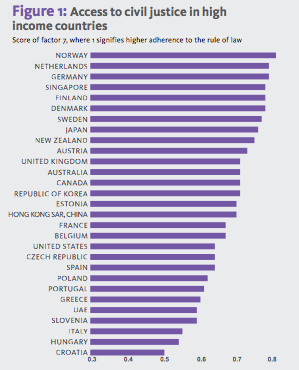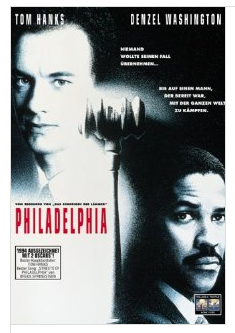On my first Justice Bus trip, I found out that our volunteers – and the communities we serve – are willing to go the distance.
Four months into my position as an Equal Justice Works AmeriCorps Legal Fellow at OneJustice, I found myself boarding a bus at 6:30 a.m. on an early January morning.

Law Students from USF School of Law traveled over 600 miles round trip to bring free legal clinics to veterans. Here they are in front of the Yurok Tribal Center in Klamath.
My Fellowship focuses on running the Justice Bus Project in Northern California, so there I was, embarking on our most ambitious Justice Bus trip to date – a two-day trip to Humboldt and Del Norte Counties. This was the farthest distance the Justice Bus Project has ever gone – more than 600 miles round trip – and we were heading out, with thirteen law students and three legal services attorneys in tow.
Our goal? To provide legal assistance to Native American veterans by staffing three legal clinics, in two days, in three different locations. Ambitious, right? And to boot, this was my first Justice Bus trip! Now, the Justice Bus Project prides itself on being flexible and modeling trips and clinics in a way that best allows our pro bono efforts to meet the needs of the community we work with. Still, after months of delicate planning, I must admit I had some butterflies: Was the distance too far? Logistically, could we execute such a complicated trip? Would veterans show up?
The discussion of a Justice Bus trip to serve Native American veterans in Humboldt and Del Norte Counties began before I started my Fellowship. Judge Abby Abinanti, Chief Judge of the Yurok Tribal Court, first contacted John Unruh, the Pro Bono Coordinator at Swords to Plowshares in San Francisco. Judge Abinanti was seeking help to address legal barriers to veteran benefits, pensions, and discharge upgrades that were being experience by the Native American community in California’s northernmost regions. Many veterans were traveling hours to San Francisco to visit a medical center. Others had never applied for benefits, or had gotten so frustrated with the system and the long processing times that they had given up, untrusting of the system.
John reached out to OneJustice, knowing the Justice Bus Project allows pro bono lawyers and law students in urban areas to put their skills to use in rural and isolated parts of the state. Additionally, when needed, our flexible model enables us to bring the legal services attorneys with the legal expertise needed with us, on the bus. Together, OneJustice, Swords to Plowshares, and the Yurok Tribal Court decided the Justice Bus model was the appropriate vehicle to assist this community.
Driving over the Golden Gate Bridge on that January morning, silhouette of the City behind us, students alert and excited, I felt confident the trip would be a success. Months of planning with our partners ensured a solid foundation for two days of legal clinics. After a winding five-hour drive along Highway 101, through the Redwoods and small towns like Hopland and Cloverdale, we arrived in Bayside, CA. Like clockwork, we set up the clinic and began meeting with clients. Students conducted intake interviews and consulted with supervising attorneys from Swords to Plowshares to discuss each case, deliver legal advice, and fill out appropriate paperwork. We were joined by other volunteers from veterans’ organizations in the area, available to help with employment training, record clearance, family law issues and SSI.
On Day Two, our Justice Bus team split into two groups in order to reach as many clients as possible – half heading off to Klamath, the other half to Hoopa. Thus, my second day began with another windy drive, this time in the back of a client’s truck along the beautiful Trinity River listening to stories about Bigfoot sightings and fishing. This particular client picked us up last minute when our original ride fell through, an example of the kindness we were met with throughout the trip. Another example is the lunches that were donated by the community during the second day of clinics – large spreads of homemade sandwiches, soups, cakes and snacks kept us energized as we met with clients.
Over the course of the two-day Justice Bus trip, we assisted thirty-six clients. Many of the clients stayed to visit with their friends and fellow veterans after we finished assisting them. As a result, each clinic felt more like a community gathering – and we were welcomed into that community, with gifts of homemade kippered salmon and Yurok Tribe t-shirts. And the clients honored us by sharing their personal histories and struggles. I remember one veteran in particular who visited the clinic to get assistance with his claims for benefits only because of repeated insistence and pressure from his family to get help. It took a lot for him to be there. His story alone made the long trip feel well worth the distance traveled.

Many of our clients stayed to visit with friends after their clinic appointments and welcomed us into their community.
As we departed, there were thank you’s all around. Our team was thankful to be there and offer legal assistance, and we were thanked profusely for coming – and most importantly, we were asked to return.
Because here is the tough part: This trip really stretched our capacity – traveling farther than the Justice Bus project ever has before. It took a strong partnership with University of San Francisco Law School and a group of truly dedicated donors to make the trip possible. And, at the same time, it is clear from our trip and subsequent conversations with the Yurok Tribal Court, that there is still a lot of work to be done in the Humboldt and Del Norte areas. We were able to help some veterans, but it was not enough. My hope is that this trip helped pave the way for future trips so that we can continue to chip away at the need for legal assistance among low-income and otherwise underserved communities in the region. After being there and starting to build community with these veterans, I feel so deeply that we cannot simply walk away – one Justice Bus trip alone was simply not enough.

Clients and community members welcomed us – and we are planning to return to bring even more services to this area.
And I’m so proud that the OneJustice team is stepping up! We are in the process of planning future Justice Bus trips that will not only focus on the Native American veteran population in the area, but may include providing legal assistance for Yurok Tribe families with children with special education needs. At the same time, we’ve learned that there is a substantial need for help for immigrant youth who are eligible for the new federal immigration relief program (Deferred Action for Childhood Arrival). I have vowed to myself that we will return – because we are now in community with this tribe and this underserved region, which faces so many barriers to legal assistance on critically important issues.
And finally, this trip was a successful expansion of the Justice Bus Project. We’ve always wondered what the outer boundaries of these trips might be. How long are people willing to ride on a bus to deliver free legal assistance? How willing are truly distant community to receive that help? How far are our volunteers really willing to go? I learned so much during this first overnight Justice Bus trip – the importance of careful planning, the delicate work of building trust in a new community – and the fact that our volunteers are, quite literally, willing to go the distance to reach a community in need.
—————————————————————————————–
Lauren Roberts is one of OneJustice’s Equal Justice Works AmeriCorps Legal Fellows and runs the Justice Bus Project in Northern California. A Berkeley native, Lauren was raised with an eye and ear toward social justice work. Before law school she worked as a field organizer with MoveOnPAC, then moved to Japan where she taught English in the prefecture where her great-grandmother was born. She also worked as a paralegal at Disability Rights Advocates, which ultimately propelled her to go to law school. During law school, Lauren spent one summer working with refugees in Cairo and her second summer working on behalf of death row inmates in California. Lauren is thoroughly enjoying running the Justice Bus Project and learning more about the needs of low-income communities in rural areas of the state. Additionally, organizing the Justice Bus Project has allowed her to put her varied experiences – teaching, organizing, and travel – to use in a legal setting.



















